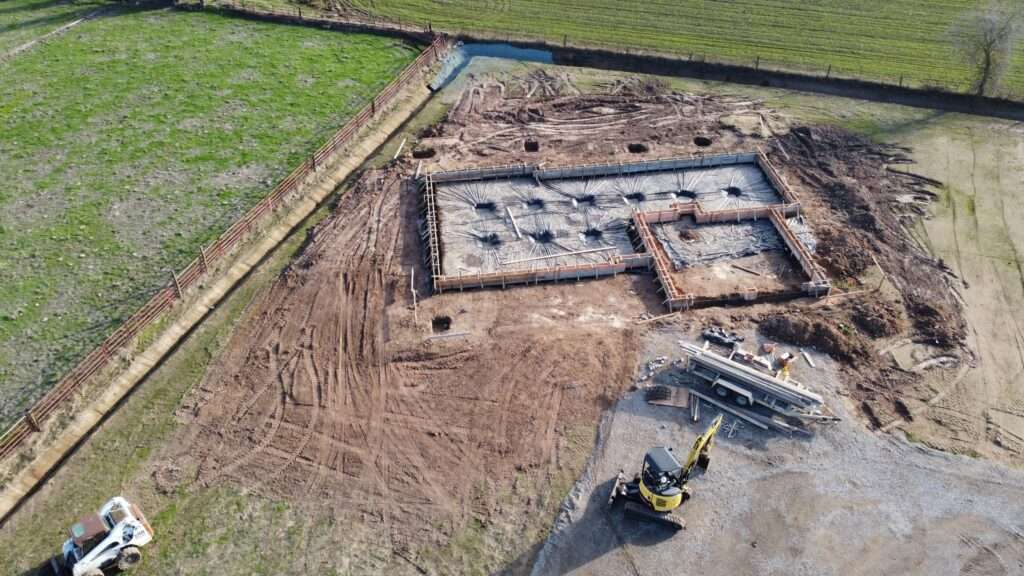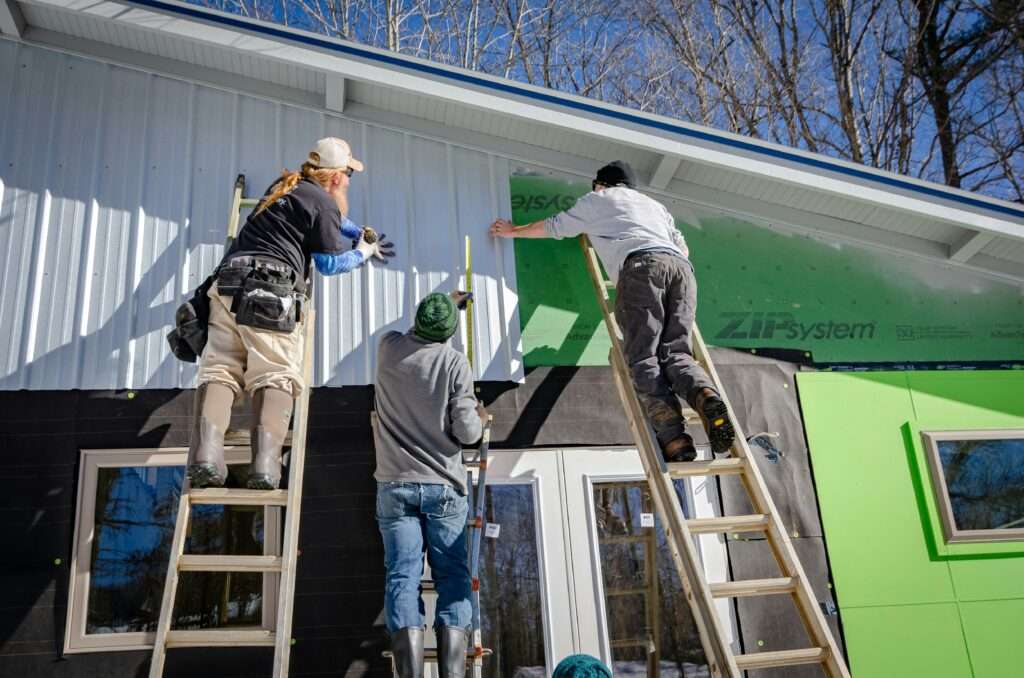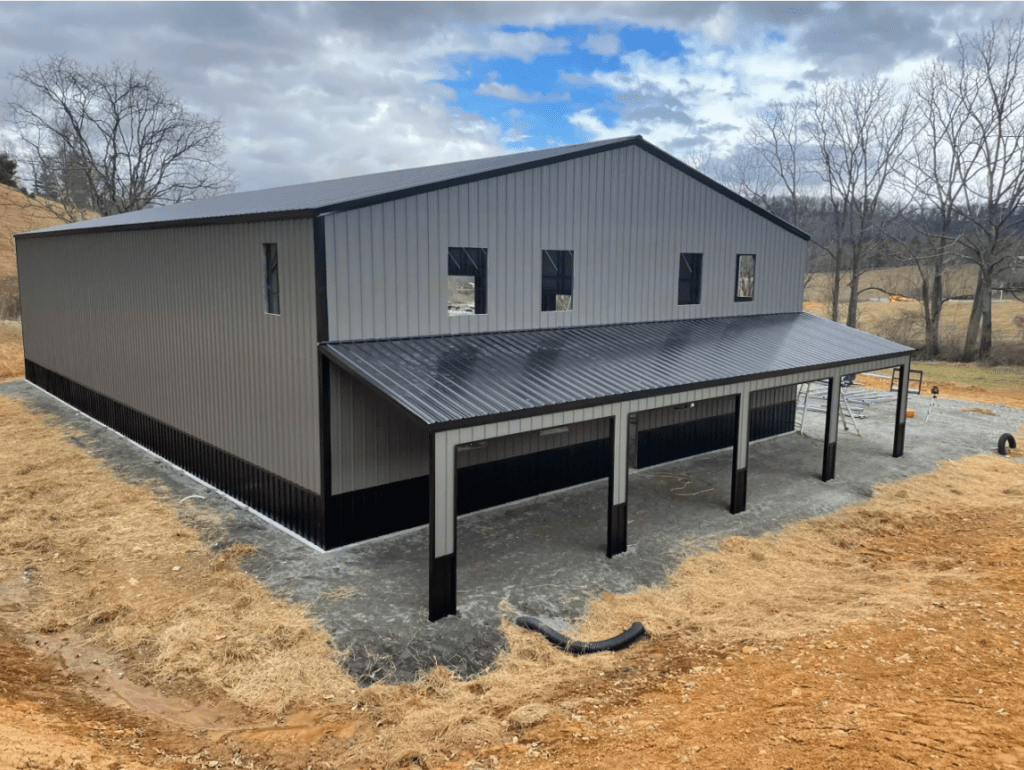In the realm of construction, the choice of building material sets the stage for a structure’s functionality, longevity, and aesthetics. Steel, a time-tested and versatile material, has emerged as a frontrunner, particularly for warehouses, industrial facilities, commercial buildings, and even contemporary residences. But what exactly makes steel buildings such a compelling option? Delve into this article to discover the numerous advantages that steel offers, transforming your building project from conception to a triumph.
The Allure of Steel – Strength and Speed
Steel’s dominance in construction stems from its exceptional strength-to-weight ratio. Compared to concrete, a heavier and bulkier material, steel allows for the creation of lighter structures with several significant advantages:
- Reduced Foundation Requirements: The lighter weight of a steel building translates to less downward pressure on the ground, eliminating the need for massive concrete foundations, a significant cost driver in traditional construction. This allows for shallower foundations to be employed, leading to substantial cost savings on materials, excavation, and labor. This is particularly beneficial for projects with less-than-ideal soil conditions, where extensive foundation work for heavier structures becomes necessary.
- Seismic Resilience: Unlike concrete, which can shatter under seismic stress, steel exhibits a remarkable degree of flexibility. During earthquakes, a steel building can sway slightly, absorbing and dissipating the energy of the tremors. This inherent ductility allows the structure to return to its original form or sustain minimal damage, significantly enhancing its resilience in earthquake-prone regions. Steel buildings can be specifically designed to incorporate energy-dissipating features, further bolstering their ability to withstand seismic activity.
- Greater Spans and Open Floor Plans: One of the most compelling advantages of steel is its ability to create expansive, column-free spaces. Steel beams and trusses boast exceptional strength, allowing them to span vast distances without requiring interior support columns. This translates to a more open and flexible interior layout, maximizing usable floor space. This is particularly advantageous for warehouses, manufacturing facilities, and modern workplaces, where large, uninterrupted areas are essential for efficient workflow and machinery placement. Open floor plans also foster a sense of collaboration and improved communication within a workspace.
- Speed of Construction: In today’s fast-paced world, time saved translates to cost savings and a quicker return on investment. Steel buildings excel in this regard due to the extensive use of prefabrication. Steel components are meticulously manufactured off-site in controlled environments, ensuring consistent quality and dimensional accuracy. This eliminates the need for on-site cutting, welding, and fabrication, significantly accelerating the construction process. Prefabricated steel components arrive at the building site ready for assembly, leading to a much faster erection time compared to traditional methods that rely heavily on on-site work. This allows businesses to occupy their new space sooner and reduce the disruption caused by construction activities.
The combination of these factors – reduced foundation requirements, seismic resilience, expansive open floor plans, and rapid construction – makes steel buildings a highly attractive option for a wide range of projects. From industrial facilities and warehouses to commercial buildings and even contemporary residences, steel offers a robust and efficient foundation for structures built to last.
Durability and Low Maintenance – Built to Last
Steel isn’t just strong; it’s a champion of longevity, offering exceptional resistance to the elements and the passage of time. Here’s how steel buildings stand the test of time:
- Impervious to Nature’s Wrath: Unlike wood, a natural material susceptible to organic threats, steel is an inorganic wonder. It’s innately resistant to the destructive forces of:
- Termites: These wood-devouring insects pose a significant threat to wooden structures. Steel, however, is completely unappetizing to termites, eliminating the risk of structural damage caused by these persistent pests.
- Rot and Decay: Moisture is the enemy of wood, leading to rot and decay that can compromise structural integrity. Steel is unaffected by moisture, remaining sound and free from rot for the life of the building.
- Mold and Mildew: Damp environments can foster the growth of mold and mildew, which can not only damage building materials but also pose health risks. Steel’s non-porous nature discourages the growth of these unwanted organisms, contributing to a healthier indoor environment.
- Low Maintenance Needs: Steel buildings are champions of low maintenance. Unlike wood, which requires regular staining, sealing, and potential replacement of rotted sections, steel requires minimal upkeep. A well-designed steel building primarily needs:
- Periodic Inspections: Regular visual inspections by qualified professionals are crucial to identify any potential issues like minor corrosion or loose connections. These inspections are typically recommended every one to two years, depending on the environment and building use.
- Occasional Repainting: Over time, the exterior paint on a steel building may fade or chalk due to sun exposure. A fresh coat of paint applied every 10-15 years, depending on the paint quality and environmental factors, will not only restore the building’s aesthetics but also provide an additional layer of protection against corrosion.
By minimizing the need for ongoing maintenance, steel buildings significantly reduce life-cycle costs. You avoid the ongoing expenses associated with repairs, replacements, and labor required to maintain structures built with less durable materials.
- Fire Resistance: Fire safety is paramount. Steel is a non-combustible material, meaning it won’t catch fire or contribute to the spread of flames. This offers a significant advantage over wood and other traditional building materials that readily ignite and fuel a fire. In the unfortunate event of a fire, steel buildings:
- Contain the Blaze: Steel walls and roofing can act as a barrier, slowing the spread of fire and providing valuable time for occupants to evacuate safely. This compartmentalization can also help prevent the fire from damaging neighboring structures.
- Maintain Structural Integrity: Steel retains its strength at high temperatures, unlike some materials that can buckle or collapse when exposed to flames. This characteristic allows steel buildings to remain structurally sound for an extended period, providing a safe exit path for occupants and facilitating firefighting efforts.
The exceptional durability and low maintenance requirements of steel buildings translate to long-lasting structures with minimal ongoing costs. This makes steel a wise investment, offering peace of mind and a building that will serve you well for generations to come.
Design Flexibility and Sustainability – A Modern Marvel
Steel transcends functionality; it embraces creativity. Let’s delve into the design versatility and surprising sustainability credentials of steel buildings.
- Architectural Versatility: Unlike some materials confined to boxy shapes, steel offers unparalleled design freedom. Its inherent strength and workability allow for the creation of buildings that are both aesthetically pleasing and functionally exceptional:
- Modern Marvels: Steel’s clean lines and inherent strength are a perfect fit for contemporary architecture. Sleek, minimalist facades with expansive windows and open floor plans are easily achievable with steel framing. This creates a sense of light, airiness, and modern sophistication.
- Curvaceous Creations: Steel’s flexibility isn’t limited to straight lines. Modern technology allows for the fabrication of curved steel beams and panels, enabling the creation of buildings with intricate curves and geometric shapes. This opens doors for architects to conceptualize and realize truly unique and visually striking structures.
- Endless Possibilities: Whether you envision a soaring atrium, a multi-level building with dramatic cantilevered sections, or a structure that seamlessly integrates with a curved glass facade, steel can accommodate your vision. This design flexibility allows architects to push the boundaries and create buildings that are not just functional but also inspiring.
- Sustainable Choice: Steel’s eco-friendly credentials might surprise you. Here’s how steel contributes to sustainable construction:
- Recycled and Recyclable: Steel is the ultimate recycling champion. It’s 100% recyclable, meaning scrap steel from construction or demolition can be reprocessed and used to create new steel products. A significant portion of structural steel already comes from recycled materials, reducing reliance on virgin resources. This closed-loop system minimizes environmental impact and promotes resource conservation.
- Durability Reduces Waste: Steel’s exceptional longevity translates to a significant reduction in construction waste. Unlike materials prone to rot, decay, or damage from pests, steel buildings require minimal replacements throughout their lifespan. This minimizes the need for disposal of old building materials and the extraction of new raw materials for repairs or reconstruction.
- Energy-Efficient Design: Steel buildings can be designed to be energy-efficient champions. The inherent strength of steel allows for the creation of thin yet highly insulated wall and roofing panels. These insulated panels minimize heat transfer, reducing the energy needed for heating and cooling the building. Additionally, steel structures can readily integrate sustainable features like skylights and strategically placed windows to maximize natural light, further reducing reliance on artificial lighting. By promoting energy efficiency, steel buildings contribute to a smaller carbon footprint and lower operational costs for building owners.
Steel’s design flexibility allows for the creation of buildings that are not only aesthetically stunning but also environmentally responsible. By embracing recycled materials, minimizing waste, and promoting energy efficiency, steel buildings play a crucial role in sustainable construction practices.
Cost Considerations – A Long-Term Investment
The initial cost of steel might raise an eyebrow, but a closer look reveals a compelling story. Here’s why steel buildings are a wise investment that delivers exceptional value over time.
- Understanding Upfront Costs: While the upfront cost of steel materials might appear higher than some traditional building options like wood, it’s crucial to consider the bigger picture. Several factors can influence the final cost of your steel building project:
- Project Complexity: Simpler, rectangular buildings with minimal customization will naturally be more cost-effective compared to structures with intricate designs, expansive open floor plans, or special features like skylights.
- Steel Market Fluctuations: Like any commodity, the price of steel can fluctuate based on market forces. Consulting with experienced steel building contractors allows you to leverage their expertise in navigating market conditions and securing the best possible price for your project.
- Quality and Engineering: While opting for the lowest bidder might seem appealing, sacrificing quality can lead to unforeseen costs down the road. Choosing reputable steel building manufacturers who utilize high-grade materials and employ sound engineering practices ensures a durable and long-lasting structure, minimizing the risk of future repairs or replacements.
However, the initial cost of steel shouldn’t be viewed in isolation. Several advantages of steel buildings translate to significant cost savings throughout the building’s lifespan:
- Faster Construction Times: As discussed earlier, steel buildings excel in construction speed due to prefabrication and efficient on-site assembly. This translates to reduced labor costs compared to traditional methods that rely heavily on on-site construction activities. Additionally, faster construction times mean you can occupy your building sooner and start generating revenue or utilizing the space for your operations. This reduction in downtime translates to a faster return on investment.
- Reduced Foundation Requirements: The lighter weight of steel buildings allows for the use of shallower and less complex foundations compared to those needed for heavier structures like concrete buildings. This translates to significant cost savings on foundation materials, excavation work, and labor. In some cases, depending on the soil conditions, steel buildings may eliminate the need for extensive foundation work altogether, leading to even greater cost savings.
- Lower Maintenance Needs: Steel’s inherent durability and resistance to the elements minimize the need for ongoing maintenance. Unlike wood buildings that require regular staining, painting, and potential replacements due to rot or insect damage, steel buildings primarily necessitate periodic inspections and occasional repainting. This significantly reduces life-cycle costs associated with repairs, replacements, and labor required to maintain the building over time.
Long-Term Value Proposition: When you factor in faster construction times, reduced foundation requirements, and minimal maintenance needs, the initial cost of steel becomes a worthwhile investment. Steel buildings offer exceptional durability, meaning they stand strong for decades with minimal upkeep. This translates to a significantly lower life-cycle cost compared to structures built with materials susceptible to wear and tear. Furthermore, steel buildings offer a high return on investment as they retain their value exceptionally well. If you ever decide to sell your steel building, its durability and low maintenance requirements will be attractive selling points, potentially commanding a premium price in the market.
By considering the long-term value proposition of steel buildings, you’ll discover that the initial cost is an investment that reaps significant rewards over time. Steel offers a robust and cost-effective solution for a wide range of building projects.
Conclusion
Steel buildings stand as a testament to strength, efficiency, and sustainability. Their exceptional strength-to-weight ratio translates to faster construction times, reduced foundation requirements, and expansive, column-free spaces. Durability is another hallmark of steel. Impervious to nature’s wrath and requiring minimal upkeep, steel buildings offer a long-lasting solution with minimal life-cycle costs. When fire safety is paramount, steel’s non-combustible nature provides an extra layer of protection. But steel’s appeal goes beyond functionality; it embraces design freedom. From sleek, modern lines to buildings with captivating curves, steel can be molded to complement any architectural vision. Furthermore, steel buildings are champions of sustainability. Recycled materials and exceptional durability minimize environmental impact.
However, navigating the world of steel buildings requires partnering with a reliable supplier. Look for a company with a proven track record, a commitment to high-quality materials and construction practices, and a team of experienced professionals who can guide you through the entire process, from design conception to project completion. A reputable steel building supplier will work closely with you to understand your specific needs and budget, ensuring you get the right building for your requirements. With a trusted partner by your side, you can transform your vision for a steel building into a reality, a structure that will serve you well for generations to come.






